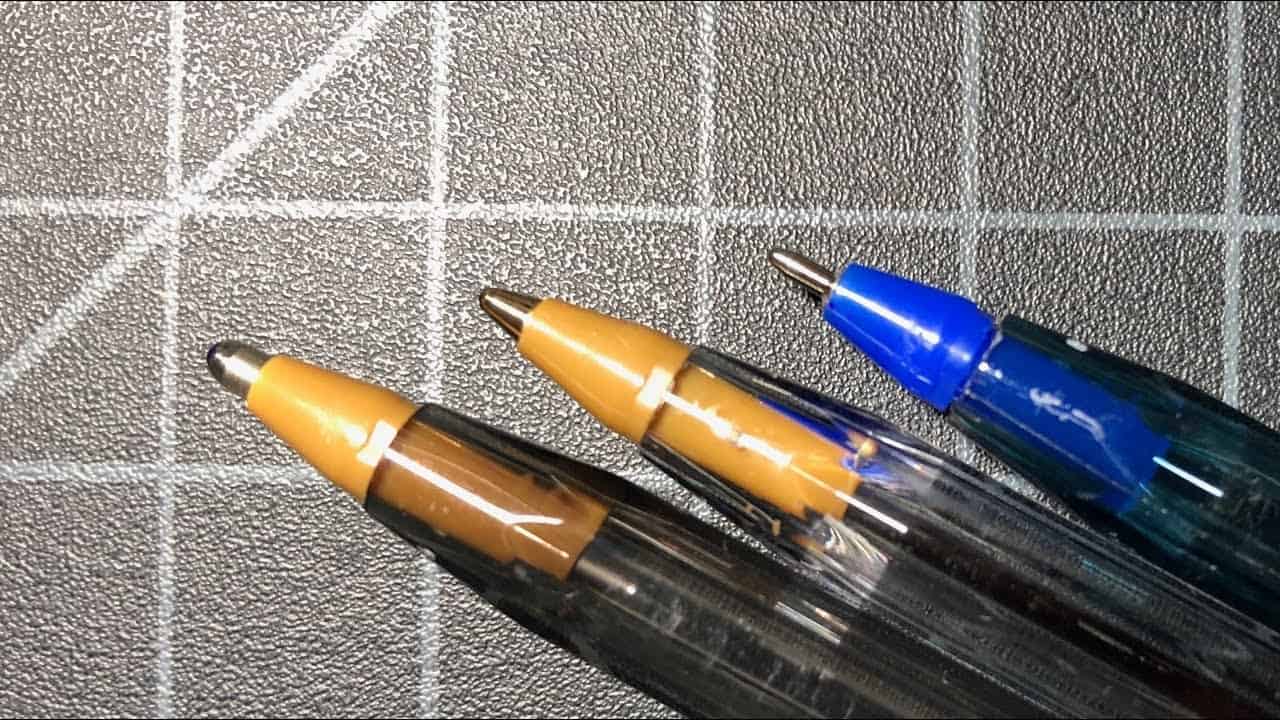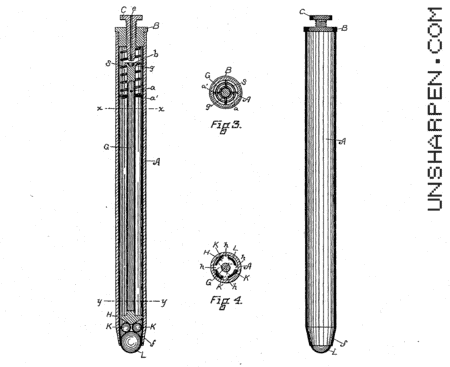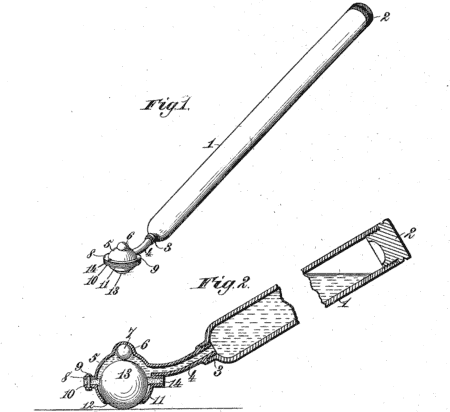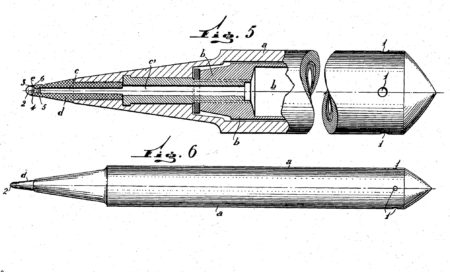One of the more common questions people have about pens is, “Who invented the ballpoint?” We honestly can’t say why this gets asked so often but it most certainly does, so let’s dive in.
The Origins Of The Ballpoint Pen
It’s commonly accepted that a Hungarian man named László Bíró designed the first ballpoint pen and patented it in 1938. This is a popular belief and one backed by the simple fact that a ballpoint is called a “Biro” (pronounced “bee-ro”) in many places. Just look at Dyson’s famous pen, the Biro, as an example of this legacy.
While László Bíró played a major part in the popularization of the ballpoint, it’s not perfectly accurate to call him its creator. He is more accurately described as the inventor of the modern ballpoint or the first commercially viable ballpoint, not the first one in history. Bíró displayed a ballpoint pen at the 1931 Budapest International Fair but didn’t patent and fully release the design until 1938.
Harvard-trained lawyer John J. Loud is more accurately described as the inventor of the ballpoint. The Weymouth, Massachusetts-born Loud patented what can be only described as a ballpoint pen on October 30, 1888. Loud’s pen was never manufactured, so his claim to the invention of the ballpoint isn’t entirely concrete. Over 350 objects resembling ballpoint pens were designed and developed in the years after Loud’s patent but none reached full production [0].
At the early stages of the ballpoint’s history the problem wasn’t so much the design of the pen — as evidenced by the huge number of designed — but rather the formulation of the ink. A too-thin ink would leak out of the ball while an overly-thick ink would not flow through the ball or write well on paper.
Loud, who was working as a leather tanner, filed US Patent 392,046, claiming to have invented “certain new and useful improvements in pens.” The patent describes what is clearly a ballpoint design:
In the pen herein illustrated I have used three of these antifriction balls [K], which are of sufficient size when dropped into the tube [A] to dispose themselves evenly around the top of the sphere [L] and against the inner surface of the tube…
In this position the air-hole [c] is closed, and at the same time the ball [L] is firmly pressed outwardly and held against its seat in the contracted month [f] of the tube [A], the seat being accurately fitted to the ball. In this position no ink can escape from the pen. When once the marking-sphere [L], the antifriction balls [K] [K] [K], the rod [G] and its attachments, and the spring [S] are introduced in place, the cap [B] is screwed down and need rarely be removed, except for cleaning the pen.
The pen uses a design with multiple balls, which meant tolerances did not have to be as high as they are today. And then the writing tip, which Loud described as the “marking-sphere” is the ballpoint much as we know it today.
It may be apocryphal but it is said that Loud’s background in leather tanning was an inspiration behind the ballpoint design. A rotating, writing ball would be able to write on leather in a way that a fountain pen could not.
This new ballpoint concept paved that way for future designs, which took all sorts of odd, wonderful forms. Just look at this March 1896 design from William N. Fessenden…
It was clear that the ball bearing was going to have a place in the future of writing, but no one knew if it would be Fessenden’s “Fountain Marking Pen” or another design that finally made what would become known as the ballpoint pen commercially viable.

Bíró And The Biro
In 1935 Hungarian newspaperman László (Ladislas) Bíró started work on his ballpoint design. He was used to working with thin newspaper and was often puncturing pages of newsprint, so he had a special need and clear experience with printing and ink. Newspaper ink in particular was quick-drying which was a key insight, especially when combined with a ball writing tip and a gravity-fed ink system.
The early Bíró designs were on the right track but had problems. Being gravity-fed the pens needed to be upright to work. Also ink was still not flowing smoothly, instead being prone to clumping. Bíró, now working with his brother and having moved to Argentina (around 1943), came up with a new design that used capillary action to pull the ink from the reservoir into the tip. A slightly textured ball tip help pull in and put down ink as well. A new patent was filed for the “Birome, ” which reflected the involvement of Juan Jorge Meyne in the development of the new pen design.
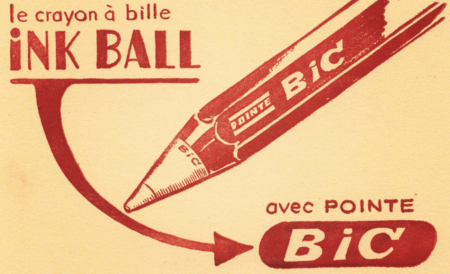
As this point the design was coming along but it wasn’t a commercial hit yet. The usefulness of the ballpoint was starting to be recognized, specifically in situations like air travel, where pilots and other fliers had problems with fountain pens leaking because of air pressure changes.
The patent for Biro’s Birome pen (pictured above) was filed in Argentina on June 17, 1943 as #2390636. The patent put a claim on the feed system that would end in a freely rotating ball at the writing end. This closed end with a “free ball nib” would be the key to a pen that could write on all surfaces without the ink evaporating.
The patent outlines key features as being:
- An airtight reservoir for storing a particularly dense ink
- A free ball nib
- A sealing mechanism in the ball which would prevent ink evaporation/oxidation
- A method for getting the ink from the reservoir to the rotating ball nib
The end result would look something like this:
Bic And The Ballpoints Commercial Success
Biro was making progress but the pen world was not standing still. Eversharp, a titan of the pen-making industry at the time, paid $500,00 for the right to produce and sell a version of the ballpoint in the North and Central American markets. Interestingly, this right was purchased from Eberhard Faber, not from Biro! Faber had tried to commercialize the ballpoint in the US and had made the initial deal with Biro, but couldn’t make a viable business out of the pen.
The pen-maker Reynolds (owned by Chicago-based salesman Milton Reynolds) devised a similar design to Biro’s ballpoint that the company believes avoided any potential patent claims. This was done by using a gravity feed instead of Biro’s design which specifically required a capillary action. Gravity designs tended to leak but Reynolds forged ahead, releasing the Reynolds Rocket pen on October 29, 1945 in New York City. The pen sold for $12.50 initially but prices dropped fast. The pen was said to be able to write for 15 years without needing a refill, as per one of its advertisements. Other claims said it could write for up to 2 years and that it could write underwater.
The Frawley Pen company was making headway with the ballpoint at the same time. That company might sound like one that was lost to time, but that’s not the case — they are now know as Paper Mate! The company designed a quick-drying ink which they put in their ballpoints, starting in 1949.
The single largest development wasn’t actually by the Bíró brothers, but by Marcel Bich. Bich purchased the rights to the ballpoint from Bíró for $2 million in December 1950 and used the patent to found Bic. By 1953 the ballpoint was in full production and the company was known as Societe Bic.[1][2] This is is the same company that still exists today and sells millions of ballpoints a day. In 1945 Bich had started producing fountain pens and pencil components out in the town of Clichy, outside of Paris, but the ballpoint was the start of the company’s true success.
The Bic Cristal was first released in 1950 and remains one of the company’s top sells today.
In January of 1954 Parker Pens first sold the Jotter. This pen had a long life (five times the writing distance of the competition from Eversharp) and it came in a number of different tip sizes. Parker sold 3.5 million Jotters the first year, with prices ranging from $2.95 to almost $9.[3] At this point these were luxury prices, with the top end of that range approaching the equivalent of nearly $100 in 2019 dollars.
Sources
0. Encyclopedia of Modern Everyday Inventions, 2003. David J. Cole, Eve B. Cole, Fred Schroeder
1. Marcel Bich, 79, Dies, 1994. Wolfgang Saxon
2. Bic History
3. Jotter History
